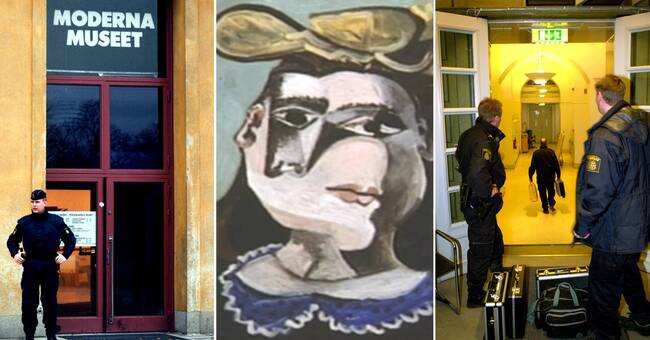1911: Mona Lisa is stolen from the Louvre
The French poet Guillaume Apollinaire was arrested on September 7, 1911 on suspicion of theft.
His close friend Pablo Picasso was also questioned.
Both were released and later it became clear that it was an employee at the museum who was behind the coup.
However, his client never heard from him after the theft and after the thief hid the painting in his apartment, he got tired and tried to sell it on.
He was then arrested and Mona Lisa regained her place in the Louvre.
1993: The Picasso coup at the Moderna Museet
In 1993, several works by Picasso and Georges Braque were stolen in a spectacular coup against the Moderna museet in Stockholm.
The thieves entered through the roof.
After more than a year of negotiations with the thieves, the then National Criminal Investigation Director Tommy Lindström and the Modern Museum's former security director Kjell Hestrell managed to get the stolen goods back.
The terms are still unknown, but no money was paid out.
2000: The Thielska thieves disappeared without a trace
In 2000, six paintings were stolen from Thielska Galleriet at Djurgården in Stockholm.
The works were four by Anders Zorn, one by Bruno Liljefors and one by Olof Sager Nelson.
The robbers entered at night and disappeared when the police arrived.
They escaped by car and must have had a boat waiting.
The total value is estimated at SEK 25–30 million.
None of the works have been found.
2000: The Rembrandt robbery at the National Museum
Three men, one of whom was armed with a K-piste, rushed into the National Museum in 2000 and came across paintings (including Rembrandt's self-portrait) for SEK 300 million.
While one of the robbers stole the paintings, one of them held visitors and staff hostage in the entrance.
Just when the police received the alarm from the National Museum, another alarm came about traffic chaos and two burning cars just 100 meters from the museum.
It was a very well-planned coup, where the thieves fled by boat in Stockholm's labyrinth of canals.
A loosely composed group of criminals turned out to be behind the act, and in the summer of 2005 all works of art had been traced and taken back to the National Museum.
The main man behind the robbery, a man with a Russian background, was sentenced to eight years in prison despite his denial.
2004: The Skriet coup in Oslo
In 2004, an armed robbery took place where masked men entered the Munch Museum in Oslo.
The targets were the two famous paintings "Scream" and "Madonna" by the Norwegian artist Edvard Munch.
The robbers forced the guards at the museum down to the floor, stole the works and then fled in a car that was later found abandoned with the frames.
Two years after the theft, the two works were found by the police in Oslo and could be returned to the museum.

